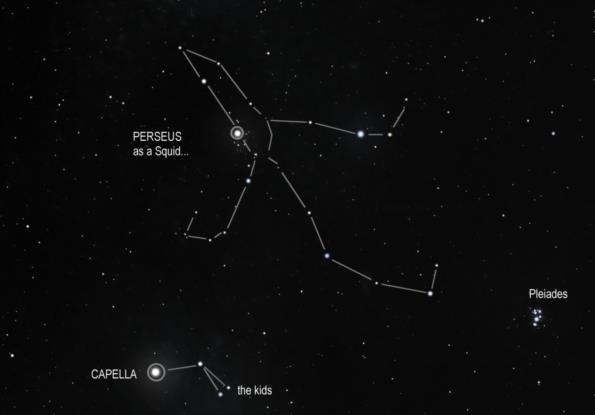
NavList:
A Community Devoted to the Preservation and Practice of Celestial Navigation and Other Methods of Traditional Wayfinding
From: Frank Reed
Date: 2023 Feb 6, 10:28 -0800
Antoine, you wrote:
"It is often quite difficult to recognize and easily identity stars on such a picture, if not on many pictures because in the real world they show up quite differently, to my eyes at least."
Aha! Yes, I agree. I very nearly mentioned that in my last post! The issue is especially severe in some digital photography. Brighter stars all end up appearing nearly the same; the pixels saturate, and they don't grow. In this photo the stars of Ursa Minor, for example, all look more or less the same and nearly blend in with other field stars.
You wrote:
"Nonetheless Capella and her 3 kids were an immediate pick-up and the rest was straightforward and easy."
For comparison, for me the key stars were in Perseus, just above Capella. Perseus has always looked like a sort of cartoon squid to me, minus a few arms, as in the attached image. That's ironic since Perseus is usually depicted holding the tentacled head of the Gorgon on his right side. For me the whole constellation is tentacled. And that's what I spotted in the photo. After that Capella was obvious along with the little isosceles triangle (the two kids on the short side).
Oh, that reminds me, I meant to say earlier, you suggested that we could do even better on positioning if the trail was the ISS. Absolutely, that would work if we knew the date of the image and had access to orbital TLEs for that week, but in this case, I think it was an airplane instead of the space station. In fact, the orientation is about right for a flight from Atlanta to any one of a dozen major airports in the northeast US: maybe Washington DC, or New York, or Boston. For that matter continuing on along the great circle, that flight might be on its way to Dublin, or London, Vienna, Istanbul, or even Riyadh... :) They're all lined up and waiting!
Frank Reed









